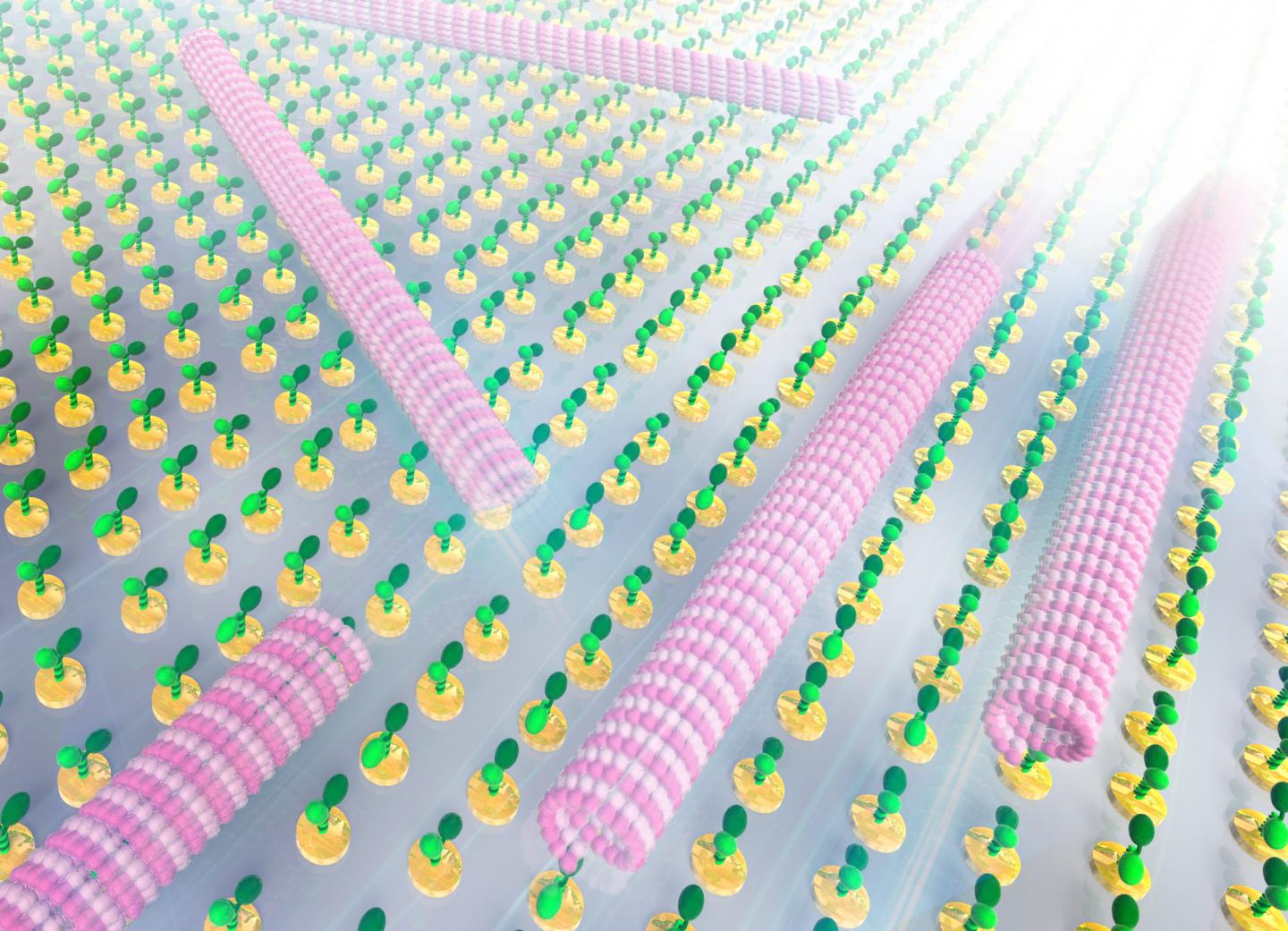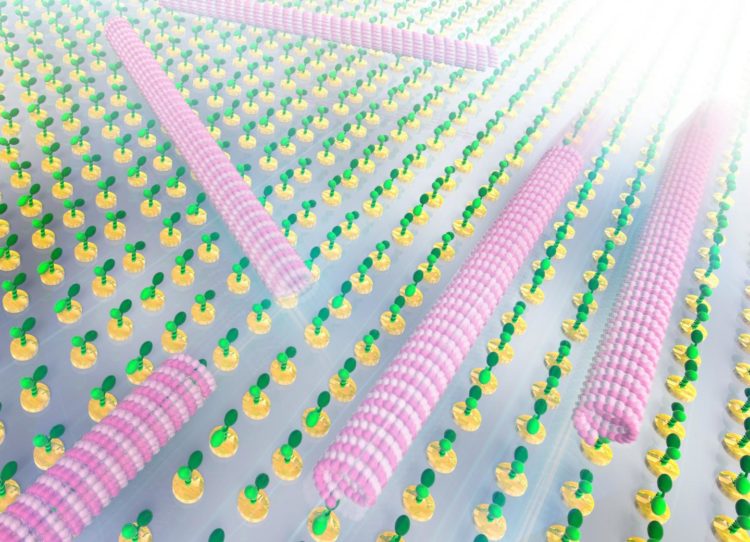A new ‘molecular nano-patterning’ technique reveals that some molecular motors coordinate differently

Credit: Science Graphics
Japan — Any kind of body movement both big and small, from the muscles in your arms to the neurons transporting those signals to your brain, rely on a massive collection of proteins we call molecular motors.
Fundamentally, molecular motors are proteins that convert chemical energy into mechanical movement, and have different functions depending on their task. However, because they are so small, the exact mechanisms on how these molecules coordinate with each other is poorly understood.
Publishing in Science Advances, Kyoto University’s School of Engineering has found that two types of ‘kinesin’ — a type of molecular motor — possess different properties of coordination. Collaborating with the National Institute of Information and Communications Technology, or NICT, the findings were made possible thanks to a new tool the team developed that parks individual motors on platforms, thousands of times smaller than a single cell.
“Kinesin is a motor protein that is involved in actions such as cell division, muscle contractions, and flagella movement. They move along these long protein filaments called microtubules,” explains first author Taikopaul Kaneko. “In the body, kinesin works as a team to transport large molecules inside a cell, or allow the cell itself to move.”
To observe the coordination closely, the team constructed a device consisting of an array of gold nano-pillars 50 nanometers in diameter and spaced 200 to 1000 nanometers apart. For reference, a skin cell is about 30 micrometers, or 30,000 nanometers, in diameter.
“We then combined this array with self-assembled monolayers, or SAM, that immobilized a single kinesin molecule on each nano-pillar,” continues Kaneko. “This ‘nano-patterning’ method of motor proteins gives us control on the number and spacing of kinesin, allowing us to accurately calculate how they transport microtubules.”
The team evaluated two kinesins: kinesin-1 and kinesin-14 which are involved in intercellular transport and cell division respectively. Their results showed that in the case of kinesin-1, neither the number nor spacing of the molecules change the transport velocity of microtubules.
In contrast, kinesin-14 decreased transport velocity as the number of motors on a filament increased, but increased as the spacing of the motors increased. The results indicate that while kinesin-1 molecules work independently, kinesin-14 interacts with each other to tune the speed of transport.
Ryuji Yokokawa who led the team was surprised by the results, “Before we started this study, we thought that more motors led to faster transport and more force. But like most things in Biology, it’s rarely that simple.”
The team will be utilizing their new nano-patterning method to study the mechanics of other kinesins and different molecular motors.
“Humans have over 40 kinesins along with two other types of molecular motors called myosin and dynein. We can even modify our array to study how these motors act in a density gradient. Our results and this new tool are sure to expand our understanding of the various basic cellular processes fundamental to all life,” concludes Yokokawa.
###
The paper “Different motilities of microtubules driven by kinesin-1 and kinesin-14 motors patterned on nano-pillars” appeared on 22 Januray 2020 in Science Advances with doi: 10.1126/sciadv.aax7413
About Kyoto University
Kyoto University is one of Japan and Asia’s premier research institutions, founded in 1897 and responsible for producing numerous Nobel laureates and winners of other prestigious international prizes. A broad curriculum across the arts and sciences at both undergraduate and graduate levels is complemented by numerous research centers, as well as facilities and offices around Japan and the world. For more information please see: http://www.
About NICT (National Institute of Information and Communications Technology)
As the only public institution that specializes in Information and Communications Technology, or ICT, NICT promotes research and development, comprehensively carries out collaboration with industry, academia, and government and business promotion, etc., and works toward the realization of an affluent, safe and secure society. For more information please see: https:/
Media Contact
Raymond Kunikane Terhune
[email protected]
81-757-535-728
Related Journal Article
http://dx.




